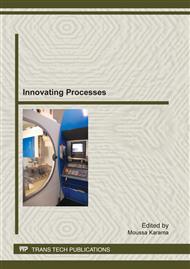p.89
p.103
p.116
p.128
p.143
p.154
p.166
p.177
p.187
Mechanical Modeling of Hemp Fibres Behaviour Using Digital Imaging Treatment
Abstract:
These last years, hemp fibres are using as reinforcement for compounds based on polymer in different industrial manufacturing for their interesting mechanical and ecological properties. The hemp fibres present a non constant cross section and complex geometry that can have a high effect on their mechanical properties. The mechanical properties of hemp fibres (Young moduli, longitudinal stress and failure strain) are rather difficult and request a specific characterization method. In this study, a micro-traction test coupled with a numerical imaging treatment and a finite elements method are used. The mechanical tensile test allows to determinate the evolution of the traction load in function of the displacement until the fibre crack. The numerical imaging allows to measure finely the hemp cross section along the fibre and aims to reconstruct a 3D hemp fibre object model from an image sequence captured by a mobile camera. And lastly, the finite elements method allows to take the real fibre geometry into consideration for the mechanical characterization using inverse optimization simplex method.
Info:
Periodical:
Pages:
143-153
Citation:
Online since:
December 2011
Authors:
Keywords:
Price:
Сopyright:
© 2012 Trans Tech Publications Ltd. All Rights Reserved
Share:
Citation:


